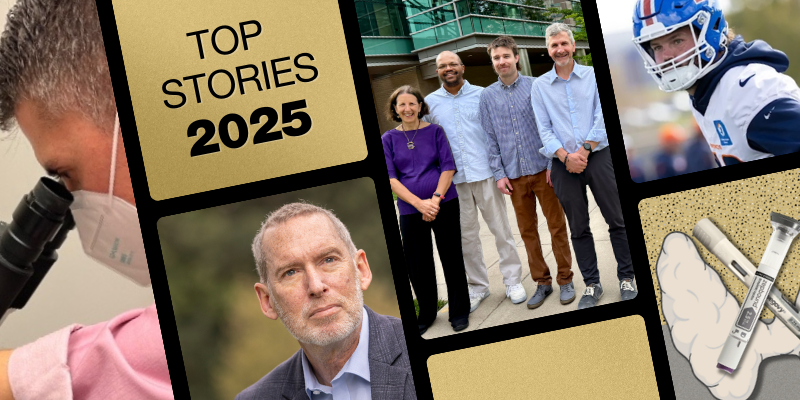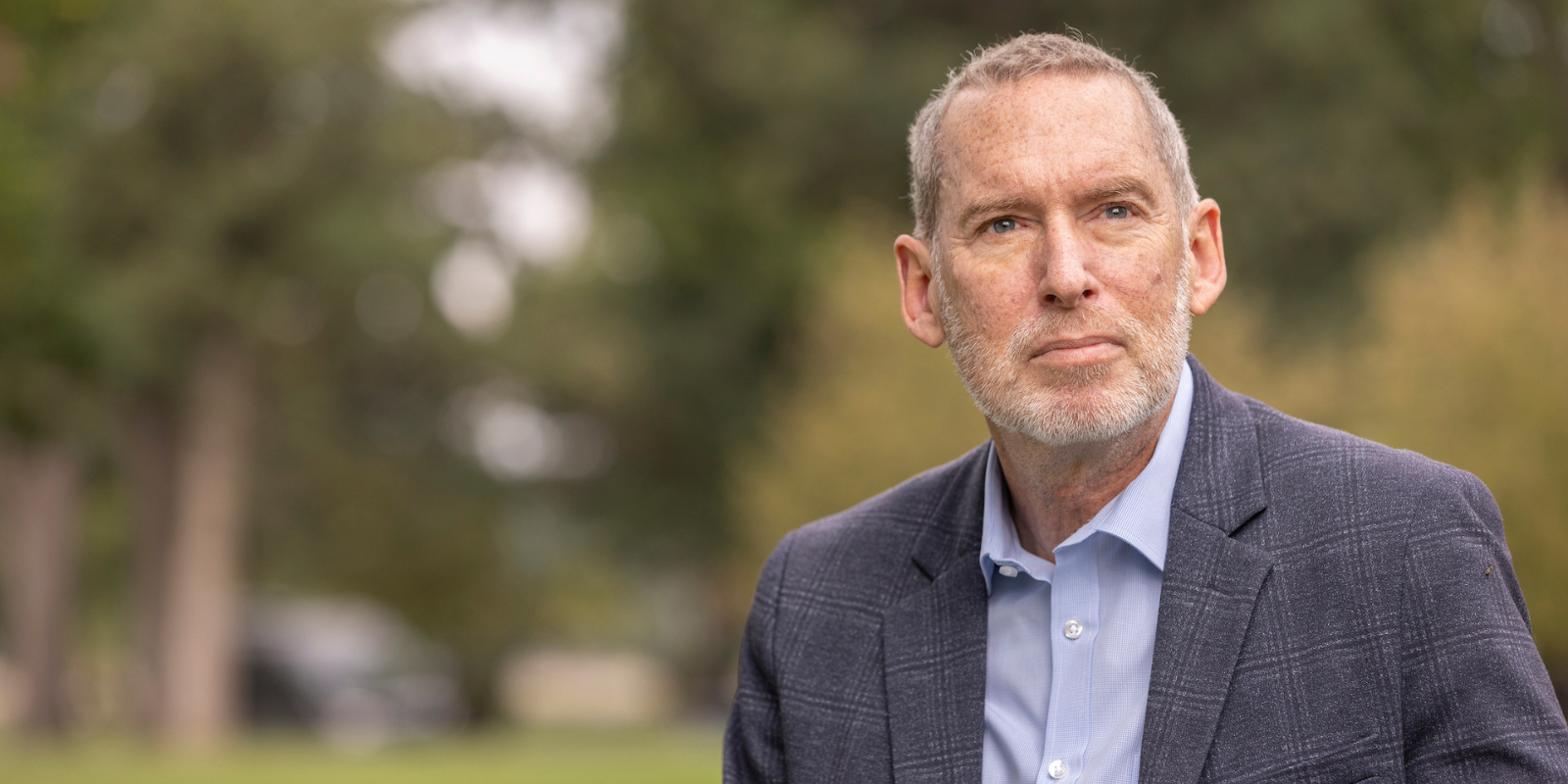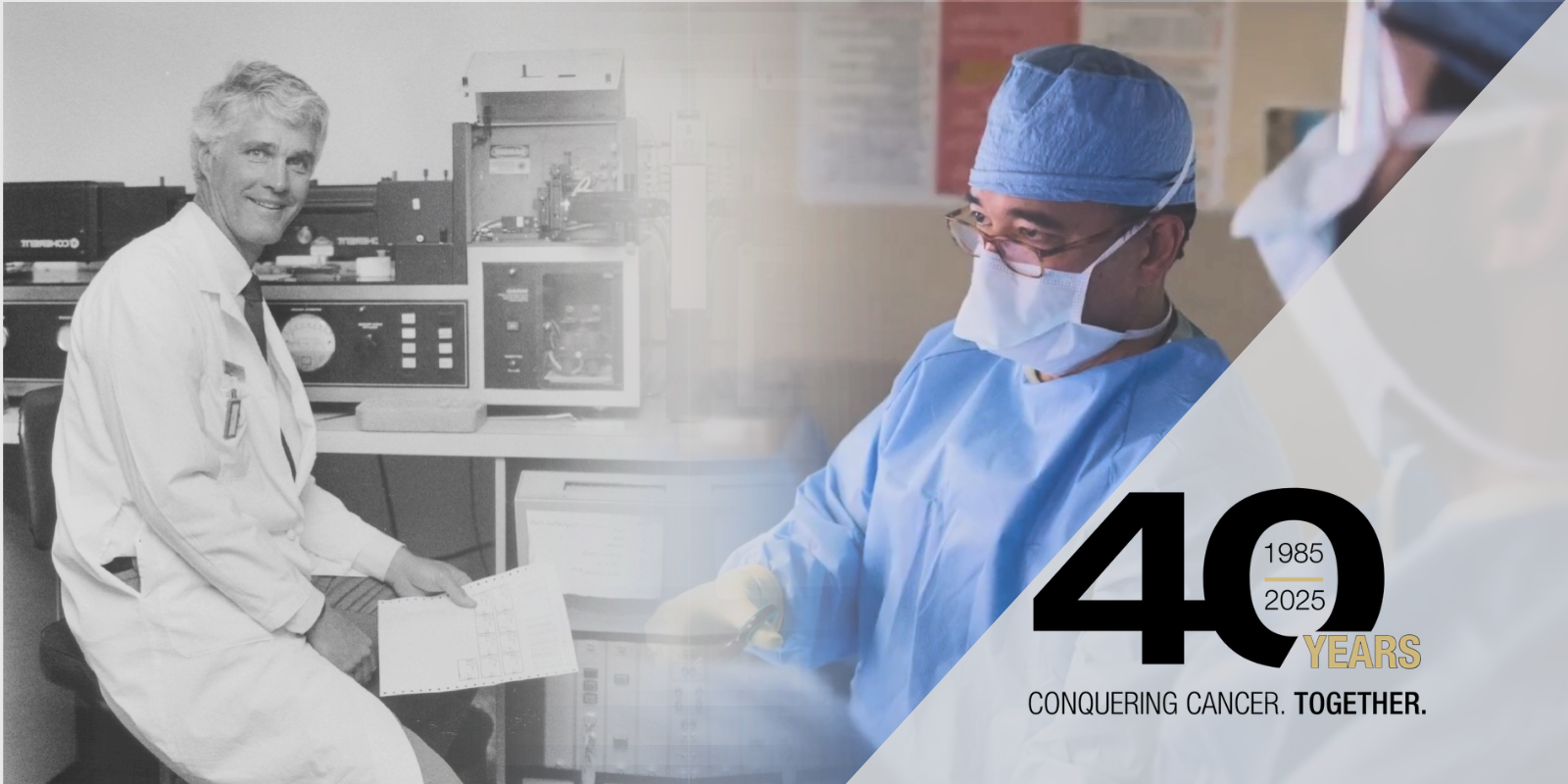COVID-19 is the most-talked-about health concern in 2020, but for many, it is not the deadliest disease. University of Colorado (CU) Cancer Center leadership is bringing attention to the fact that more people will die from cancer than COVID this year.
According to the American Cancer Society, there will be an estimated 606,520 deaths due to cancer in the United States this year. As of December 1, the Johns Hopkins University tracking website shows that more than 250,000 people have died of COVID-19 in the United States. In Colorado, an estimated 8,220 people have died from cancer and so far, more than 2,500 have died from COVID-19.
“Both are terrible, devastating diseases that cause a lot of death. They impact the ability to make a living, and they cause a lot of pain and suffering,” says Richard Schulick, MD, MBA, director of the CU Cancer Center and chair of the CU Department of Surgery. “I am glad that there is now a vaccine for COVID and COVID will eventually be taken off the table. But I think we have a lot more work to do with cancer. I am hopeful that one day in the not-too-distant future, we will actually be able to conquer a lot of the cancers that Americans and Coloradans suffer from.”
Of more immediate concern is the fact that, because of the pandemic’s interruption to the health care system, more people may die from preventable cancers because they are putting off vital screening, diagnostics and treatments.
“Nationwide, we saw a steep decrease in screening mammograms in March,” says Jennifer Diamond, MD, CU Cancer Center member and associate professor in the CU School of Medicine Medical Oncology Division. “We had some rebound later in the year, but levels of screening have not returned back to where they were before the COVID pandemic. In my practice, I’m seeing more patients that put off diagnosis of a clinically evident breast cancer because of the pandemic—not just a screening mammogram, but patients who have actually noticed a lump in the breast but didn’t bring it to clinical attention because of COVID and concern about exposure to the virus if they did go to the doctor to get it evaluated.”
Tom, a patient of CU Cancer Center member Martin McCarter, MD, says he had some concerns about COVID-19 when he first discovered he was at risk for colon cancer, but his fear of the disease prompted him to get screened anyway. Tom found out he was at risk when an at-home Cologuard test showed the presence of tumors. His doctor insisted on a colonoscopy, and the cancer was caught early. That’s when he was referred to the CU Cancer Center and the CU Department of Surgery for an operation to remove the tumor.
Tom says he knew COVID-19 was a factor during both the testing for and treatment of his cancer, but “all the safe distancing and security measures as far as mask-wearing and all that kind of stuff had been introduced” in both instances, he says. “In my mind, everything was very well adhered to and taken care of as far as mitigating any risks from COVID.”
Tom says he’s happy that any worries he had around COVID-19 didn’t prevent him from getting the care he needed in a timely fashion. Any delay could have made things worse.
“The hospitals, doctors and staff all seem to know how to deal with it,” he says. “A lot of the risk has been removed. Temperature checks, masks, distancing, all that stuff was well-handled. There was never a point where I thought, ‘I’m being exposed to sick people that are putting me further at risk.’”
But not every patient is like Tom. There are two large concerns for oncologists and cancer researchers when looking at the long-term impacts COVID-19 has on cancer: a reduction in the number of preventative cancer screenings and changes in treatment.
Reduction in cancer screenings
Whether mammograms, colonoscopies or pap smears, regular screenings are important to help stop cancer in its tracks. Early-stage cancer is much easier to treat than later-stage cancers, many of which can spread to other parts of the body.
“It is important to continue to do what you can to stay healthy. Part of being healthy is getting cancer screenings,” Bradley says. “Like wearing masks and social distancing to protect ourselves from COVID, we also need to continue to protect ourselves from cancer through regular screenings and reducing risks through a healthy lifestyle.”
Norman “Ned” Sharpless, director of the National Cancer Institute, published an article in the journal Science that estimated the COVID-19 pandemic will cause at least 10,000 excess deaths from breast cancer and colorectal cancer over the next 10 years in the United States. These numbers are due to people not getting mammograms and colonoscopies since the start of the pandemic. This is a 1% increase in deaths, but Sharpless noted that these are conservative numbers because they do not include the effects of treatment delays and treatment interruptions caused by the pandemic. Nor do they include a decrease in preventive procedures such as the HPV vaccine.
According to EPIC, a popular electronic health record system, there has been a drop of between 86% and 94% in preventive cancer screenings in 2020 for cervical, colon and breast cancer across the United States, presumably due to access disruptions caused by COVID-19. These numbers looked at averages each week in 2020 and compared them to equivalent weeks from 2017–19. The CU Cancer Center has seen a similar decrease in the number of screenings.
“Routine screening for cancer is extremely important. We would prefer to prevent it than to treat it,” Bradley says. “In the case of colorectal cancer, with screening we can remove premalignant tumors so that it never progresses. With an HPV vaccine, we prevent the cancer from occurring altogether.”
If the trend of reduced cancer screenings and absence of vaccines continues, the data suggest that many cancer cases could go undiagnosed or be diagnosed at a later stage with a poorer prognosis.
Treatment changes
In addition to putting off testing, some patients also are forgoing treatment or altering their treatment schedule in order to avoid possible exposure to COVID in hospitals and clinics.
“In patients with metastatic disease, we’ll typically do scans every two to four months to make sure that things are stable, but for some patients now, we’ve said, ‘If you’re doing well, if the bloodwork looks good, you feel good, let’s spread that out to five or six months,’” Diamond says. “We’ve really tried to individualize the treatment for patients to try to minimize COVID exposure but at the same time keep them on their treatment.”
Diamond is part of a new research study in which cancer-fighting drugs typically administered by infusions in a clinic are instead given as an injection in a patient’s home.
“They’ll set up a visiting nurse that will actually go out and administer the injection to the patient at home and draw any labs that are needed, and then the patient can just do a telehealth visit,” she says. “I think that’s something that is really innovative—a way that we are adapting our practice to make it safe for patients as far as minimizing COVID risk but also keeping them on their curative therapies.”
While there is no data out yet on the impact of delaying or reducing treatment, experts say it will have an impact.
“We were very fortunate in Colorado that our cancer center was able to continue infusions in March and April,” Bradley says. “Very few cancer centers across the country were able to keep up infusions. Only over the summer were they starting to ramp up again.”
This was due to many cities and states considering cancer treatment as elective. In Colorado, Governor Polis left all cancer treatments as necessary procedures during early shutdowns.
“You would not want to be the person in the middle of your treatment or starting treatment and having to have it delayed by several weeks or months,” Bradley says.
At the CU Cancer Center, infusions stayed at about 98% of pre-COVID levels ,while cancer-related surgeries dropped in the second quarter of the year to about 60% of pre-COVID levels. Now, surgeries are at about 110% of pre-COVID levels to make up for the patients who did not come in or delayed their care.
At other facilities around the country, not only was treatment delayed, but many changed their standards of care as well.
“One of the interesting things going on around the country is that some of the doses of chemotherapy and other infusion therapies have been reduced to decrease the chances of side effects, so that a patient would not be as susceptible to an infection or getting sick,” Bradley says. “We do not know what that does to treatment effectiveness. Now there are some discussions around if we needed to give that much chemotherapy or treatment to begin with, or if instead, treatment is being given at inefficacious doses. We don’t know.”
Diamond says that while COVID-19 related protocols are necessary to keep patients safe, they are having secondary effects on doctor-patient communication.
“There are barriers in communication with patients because we have to wear masks and face shields, and now the patients are wearing masks, so it makes some of these difficult conversations with patients more challenging because you can’t really see those nonverbal cues,” she says. “It’s also difficult because there have been intermittent restrictions on visitors coming to the clinic. That’s to keep people safe, but that makes it really challenging, especially at times when patients haven’t been able to bring a support person into the clinic. It just makes it really hard in the communication process when there’s not another set of eyes and ears to be present for those discussions.”
Safe to get screening or treatment
Though patients understandably have concerns about exposure to COVID-19 when they go to a hospital or clinic, experts say medical facilities still are very safe due to the strict procedures they follow.
“The in-hospital infection rate is extremely low. At this point, clinics have become savvier at reducing the risk of infections,” Bradley says. “If patients are doing their part with wearing masks, washing their hands and social distancing, the actual clinic environment is relatively safe.”
For those who have already missed their screening, Bradley recommends they work with their doctor to weigh their own risks—especially looking at items like family history—and strongly consider getting the screenings they need.
“Most providers would tell you that their clinic environments are safe, and that the risk of cancer is greater,” she says.
Diamond advises her patients to watch for ebbs and flows in the number of COVID-19 cases reported locally, and to schedule their screenings when cases are lower.
"I've been encouraging people to let the clinics help them in understanding when the risk might be lowest, and also focusing on all the measures that we’re doing in health care facilities now that we understand how the virus spreads and how we can protect people,” she says. “Things like masking and health screens and separating symptomatic patients from well patients—there’s a high awareness in staff of health screenings and people not coming to work if they’re sick. We’re doing all of these things to keep patients safe.”
Diamond also lets patients know that telehealth is an option if they want to talk about their specific circumstances—especially if they feel a lump that causes concerns.
“You might not be able to get a biopsy or the diagnostic procedures, but you could at least talk to your doctor about how urgent is it that I get this evaluated now, vs. waiting six months,” she says. “That’s a great resource.”
Impacts on underrepresented groups
The Office of Community Outreach and Engagement at the CU Cancer Center has many community partnerships and programs in place to identify and address barriers to cancer health equity and improve outcomes in underserved areas of Colorado, including urban and rural areas across the state. But many of those programs and their associated research studies have been put on hold longer than any other research area because they are in the least controlled environments.
“Health disparities are only going to be exacerbated during this pandemic, and the risk of cancer continues to rise,” Bradley says. “It is unfortunate that these types of research are set back, because it is all about prevention, treatment and getting people the care that they need. This will have an immediate negative impact on these communities.”
Bradley, along with other members of the CU Cancer Center, has received supplemental funding from the National Cancer Institute to look at the excess in incidents and upstaging that occurs in rural Colorado.
On the positive side
The COVID-19 pandemic is not all bad news. It is leading to new research that will have impacts on other diseases, including cancer, and innovations like telehealth will last even after the pandemic has passed.
“In times of crisis, we do tend to see incredible medical advancements,” Bradley says. “A lot of cancer treatments have been repurposed to see their effectiveness with the treatment of COVID. This may lead to us getting better in some areas of cancer treatment and have a chance for new discoveries. Discoveries in treating and preventing COVID may apply to cancer. Advancements in telehealth will unquestionably benefit cancer patients. Challenges often accelerate and bring about our most creative thinking and willingness to work together.”
Diamond says the advances in telehealth brought on by the pandemic is a good thing for some out-of-state patients who will no longer have to drive to Denver for a checkup or second opinion. It also will result in better outcomes for rural patients who don’t have easy access to cancer specialists.
“If we can expand access to expert opinions in rural communities, I think that will improve cancer care moving forward,” she says. “People who live in Wyoming or even rural Colorado, where they may have an oncologist but not really a subspecialized oncologist, it’s great that they’ll be able to get a second opinion from an expert at the University through telehealth.”



